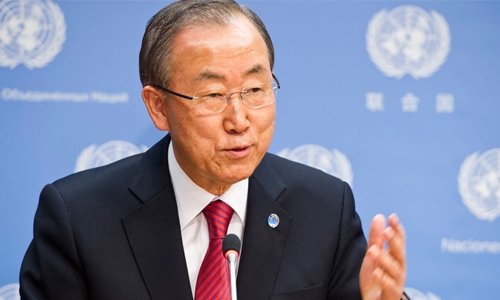UN Secretary-General's Message on World Wildlife Day
Global efforts to protect wildlife are gathering force. Last year, United Nations Member States adopted the Sustainable Development Goals, which include specific targets to end poaching. The General Assembly also unanimously agreed a resolution to limit illicit trafficking in wildlife.
These powerful expressions of political determination to end these highly destructive crimes are now being translated into actions on the ground through collective efforts by countries around the world. However, to protect this essential natural heritage for this and future generations, much more needs to be done by key actors on all continents and across sectors. In particular, conservation efforts need to engage communities that live in close proximity with wildlife.
Time is running out to end the poaching crisis that threatens some of the world’s most iconic species. To combat poaching and trafficking of protected species it is essential to address both the demand and supply of illegal wildlife products through agreed goals and targets and international
instruments, such as the Convention on International Trade in Endangered Species of Wild Fauna and Flora (CITES).
For too long, the world has been witness to heartbreaking images of the mass slaughter of elephants for their tusks. According to CITES, the killing of African elephants and trafficking in their ivory remain alarmingly high. Asian elephants are also subject to growing levels of poaching.
Many other species, such as cheetahs, pangolins, rhinos, sea turtles, sharks, tigers, whales and high-value timber, face a variety of different challenges, including from habitat change, over-exploitation or illicit trafficking.
On this World Wildlife Day, I call on all citizens, businesses and governments to play their part in protecting the world’s wild animals and plants. The actions taken by each of us will determine the fate of the world’s wildlife. The future of wildlife is in our hands!
Related Posts

